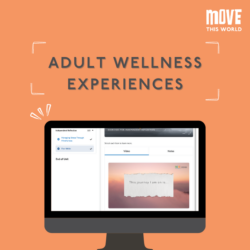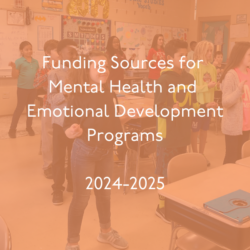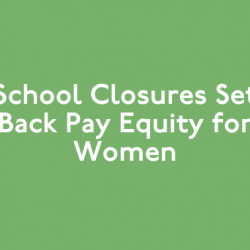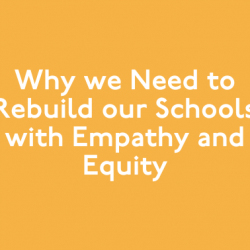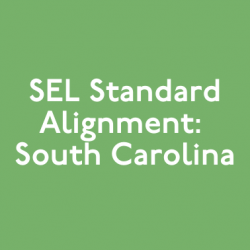According to the 2015-2017 California Healthy Kids Survey, 3 out of every 10 high school students “appear to suffer from chronic, debilitating sadness or hopelessness.” More disturbing, the survey found that “about one-sixth have contemplated suicide.” While the California Department of Education supports and promotes social emotional learning, it’s clear that educators need solutions that will foster emotional and mental health from childhood through adolescence.
Interested in learning more about how Move This World aligns with California’s state SEL standards and guidelines?
Fill out the form below.
What do the California standards require?
As part of the Collaborating States Initiative, hosted by the Collaborative for Academic, Social, and Emotional Learning, the California Department of Education (CDE) provides California educators with information about SEL, best practices, and ideas to build strong SEL throughout the state. The CDE has even defined Guiding Principles to help inform and support SEL practices throughout the state.
CDE’s Guiding Principles:
-
Adopt whole child development as the goal of education.
-
Commit to equity.
-
Build capacity.
-
Partner with families and communities.
-
Learn and improve.
While the Guiding Principles help support thoughtful system changes, educators need more actionable guidance to support specific and developmentally appropriate social and emotional skills.
Educators in California can look to a curriculum that is also aligned to the social and emotional learning framework as defined by the Collaborative for Academic, Social, and Emotional Learning. Below are examples of learning objectives from Move This World’s PreK-12 SEL curriculum.
Self-Awareness
Move This World Example Objectives
-
Recognize and label a variety of emotions.
-
Identify and describe how different situations make us feel.
-
Recognize how our emotions and behavior impact others.
-
Describe and demonstrate ways to express emotions in an appropriate manner.
-
Measure progress towards goals.
-
Describe what motivates or hinders your efforts as a learner.
-
Describe your personal strengths and areas you’d like to develop.
-
Analyze how personal qualities influence choices and successes.
Self-Management
Move This World Example Objectives
-
Identify and explore appropriate strategies to manage emotions.
-
Communicate emotions safely and authentically using a variety of modalities.
-
Identify and control impulse behaviors. Identify personal strengths and academic goals.
-
Demonstrate an awareness of how your behavior affects others.
-
List positive strategies for handling conflict.
-
Describe coping mechanisms for handling stress.
-
Develop a short-term plan to help you achieve your long-term goal.
Social Awareness
Move This World Example Objectives:
-
Identify and respond to the feelings of others.
-
Express empathy for others.
-
Recognize and accept the differences of other cultures and ethnicities.
-
Recognize and value that different people have different perspectives.
-
Identify verbal, physical, and situational cues that indicate how others may feel.
-
Identify unwelcome teasing or bullying behaviors.
-
Demonstrate how to express understanding of those who hold different opinions.
-
Define unhealthy peer pressure and evaluate strategies for resisting it.
Relationship Building
Move This World Example Objectives:
-
Listen to others and respond respectfully.
-
Demonstrate appropriate ways to show appreciation to others. Identify ways to build positive relations with peers. Identify and use a variety of strategies to solve conflict.
-
Recognize the difference between positive and negative relationships.
-
Discuss stereotyping and its negative impact on others.
-
Develop strategies to request help from others and evaluate the effects of requesting help from others.
-
Develop strategies for handling jealousies and insecurities between friends.
Responsible Decision Making
Move This World Example Objectives:
-
Identify positive behaviors that contribute to personal and community wellbeing.
-
Describe characteristics of a situation that make it feel safe or unsafe.
-
Describe what you can learn from a mistake.
-
Consider ethical, safety, and societal factors in making decisions.
-
Generate alternative solutions and evaluate their consequences for a range of academic and social situations.
-
Determine the extent to which your own decisions and behavior contribute to stress and come up with a plan for changing that decision.
-
Evaluate how honesty, respect, fairness, and compassion enable one to take the needs of others into account when making decisions.
-
Evaluate strategies for resisting pressure to engage in unsafe or unethical activities.
Developing skills within self-awareness and self-management, social awareness and maintaining relationships, and responsible decision-making skills allow students to spend time exploring their interests and passions, set goals, learn to collaborate with diverse peers, develop habits of reflection, and learn to manage stress so they can navigate conflict and persist in the face of challenges. A student of Madison Elementary School in Michigan explains,
“We use those [Move This World] strategies when we’re angry, sad, or have any emotion we recognize. It helps us be successful.”
Move This World’s curriculum cultivates individual awareness and regulation early on and grows with the students as they progress throughout the district to help develop skills and strategies related to social awareness, relationship building, and responsible decision making. To learn more about how Move This World can support your school or district, connect with our team here.






